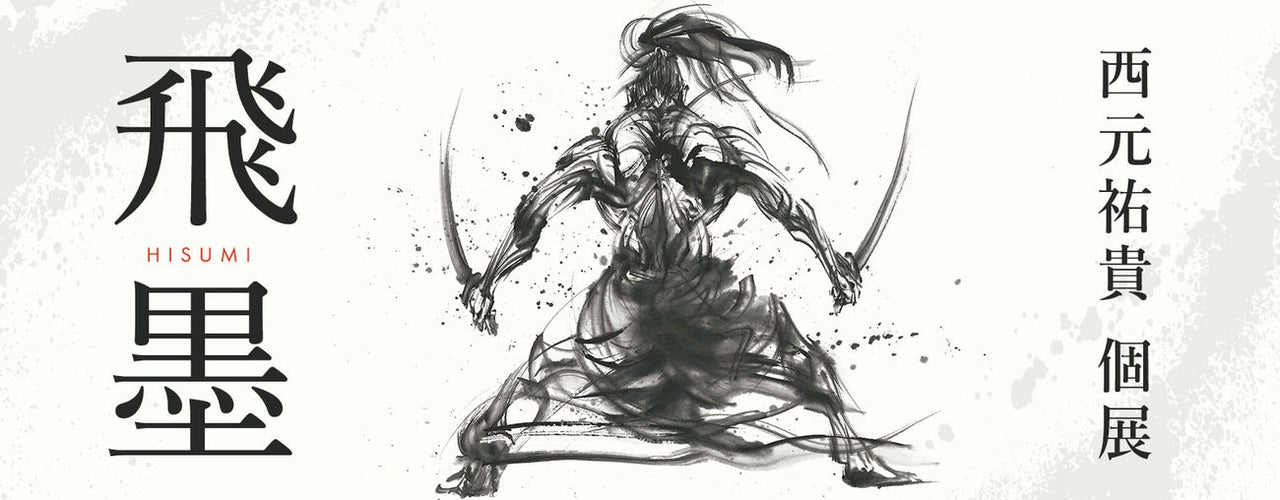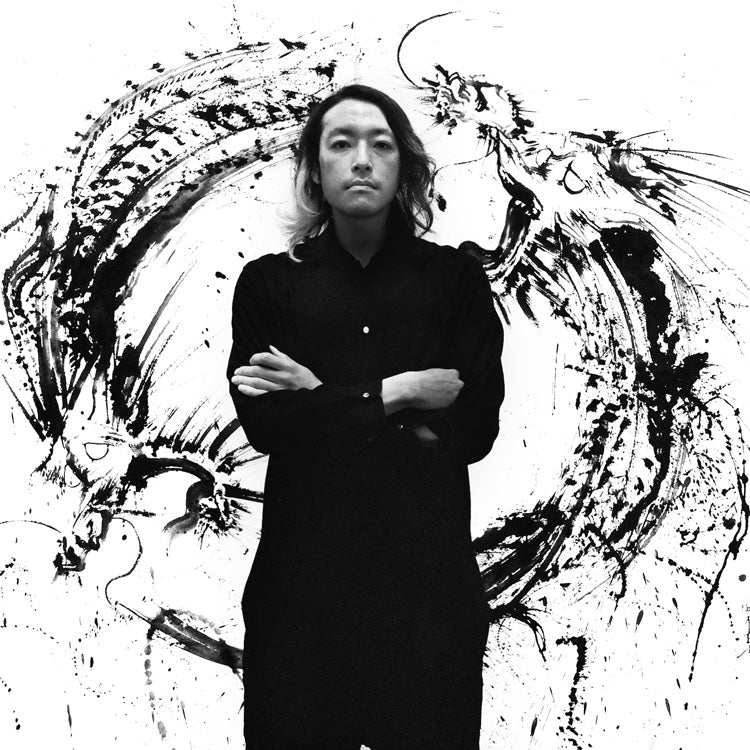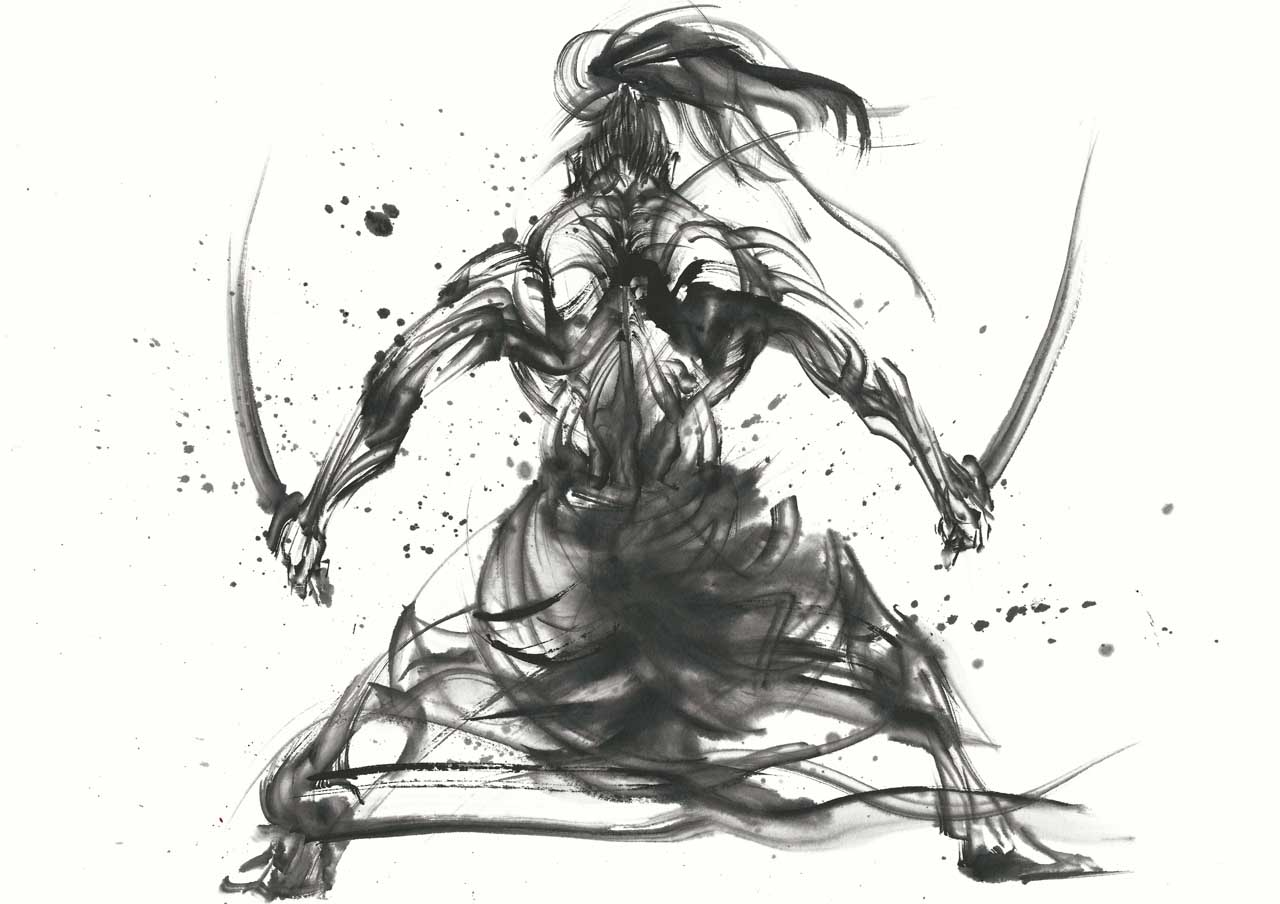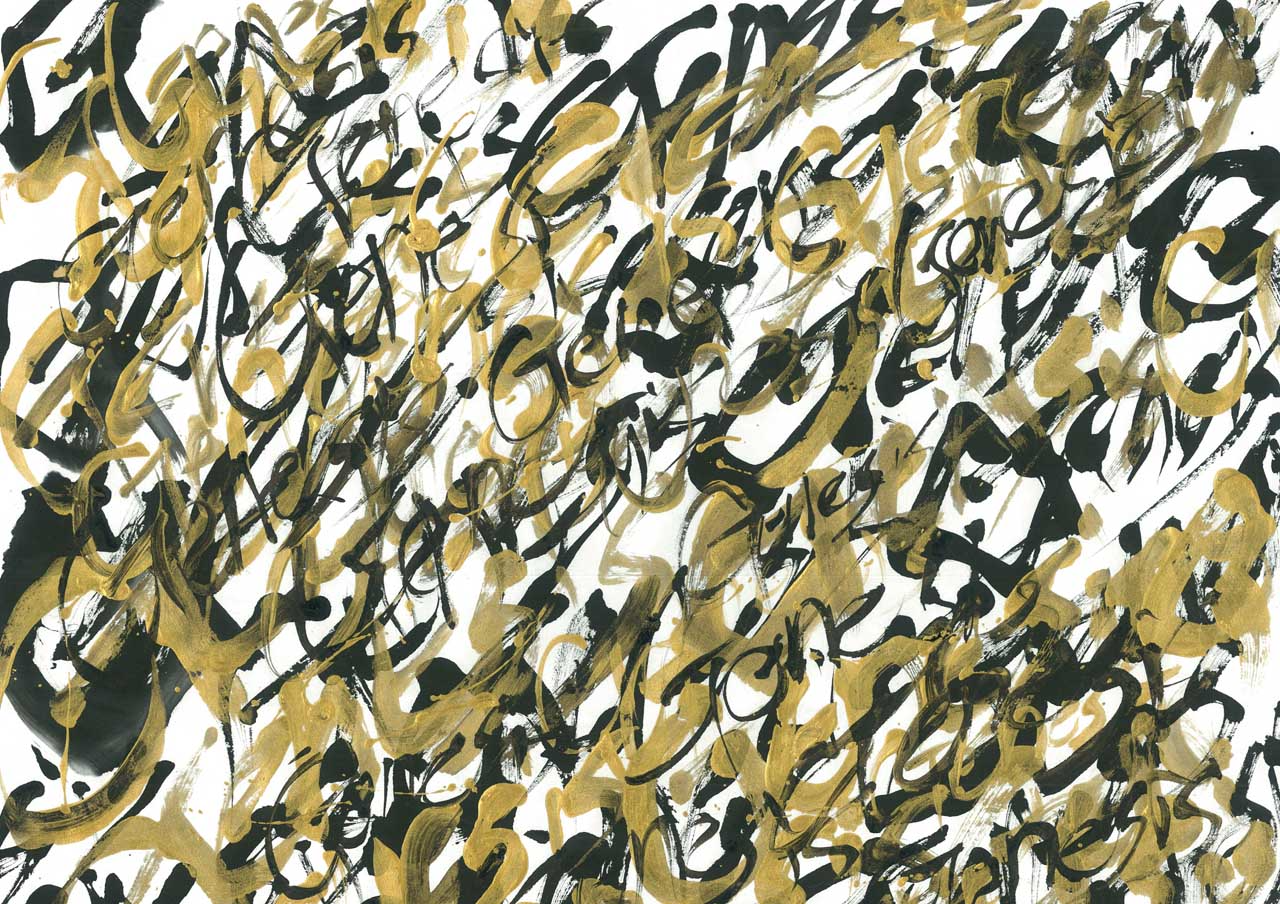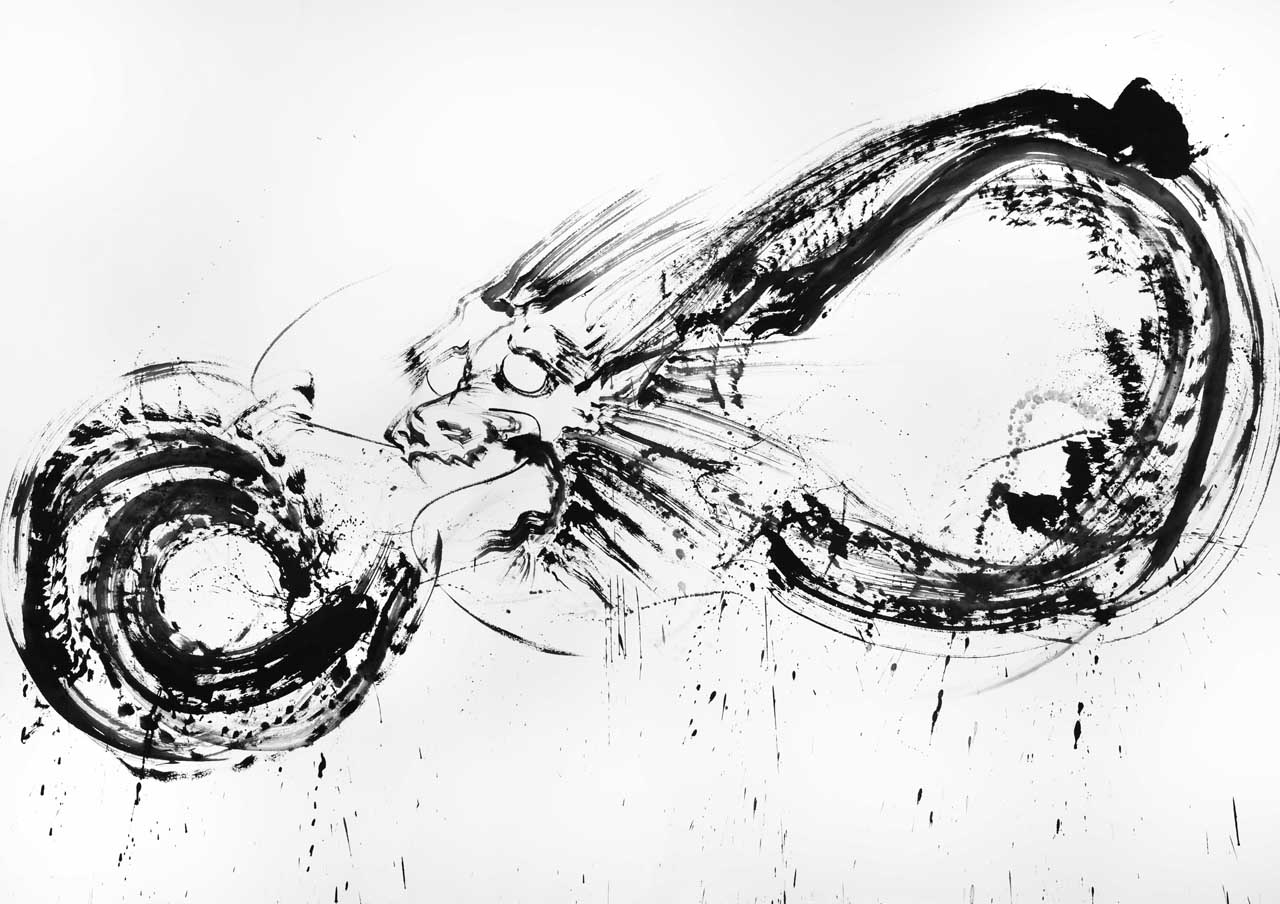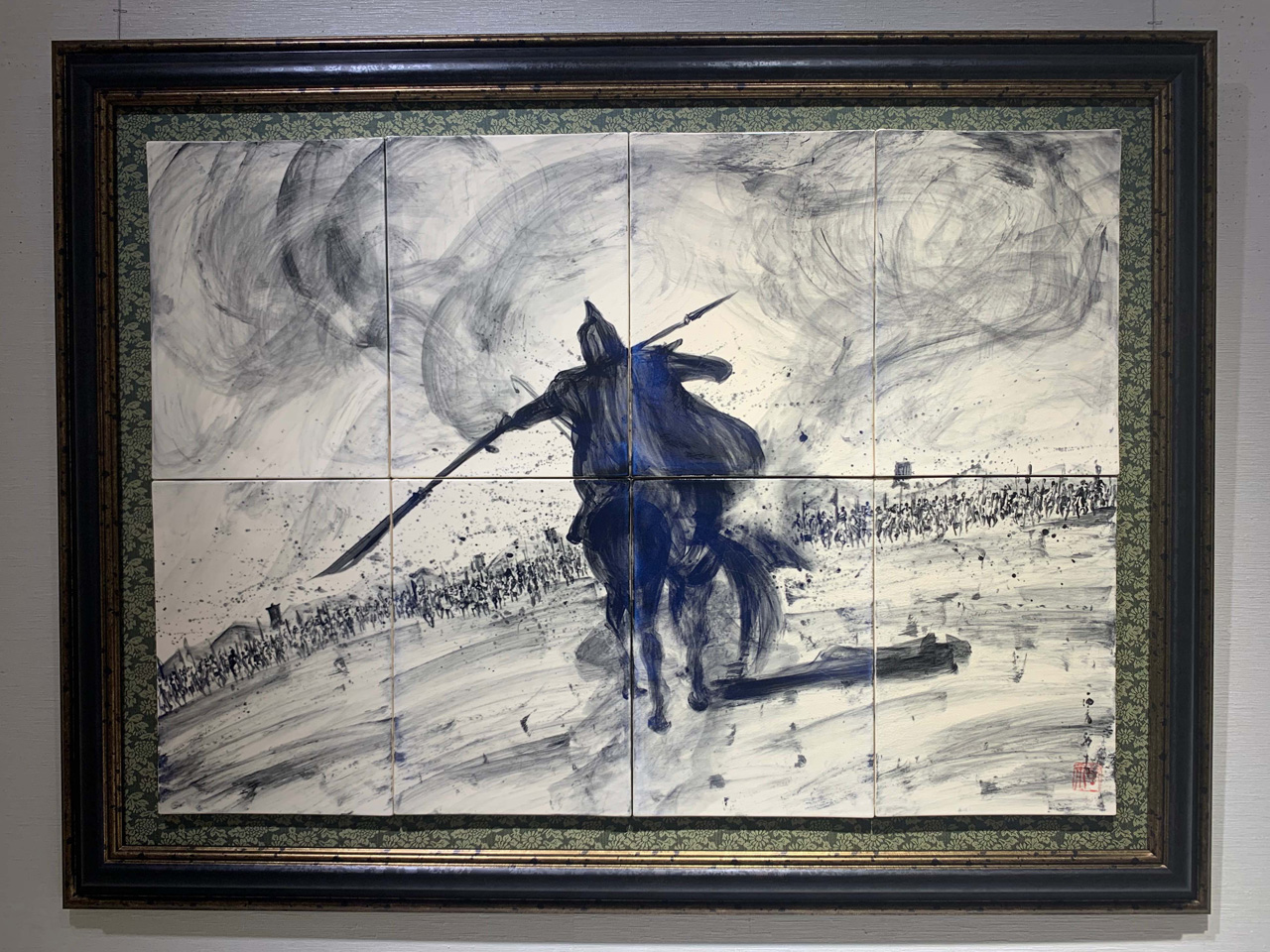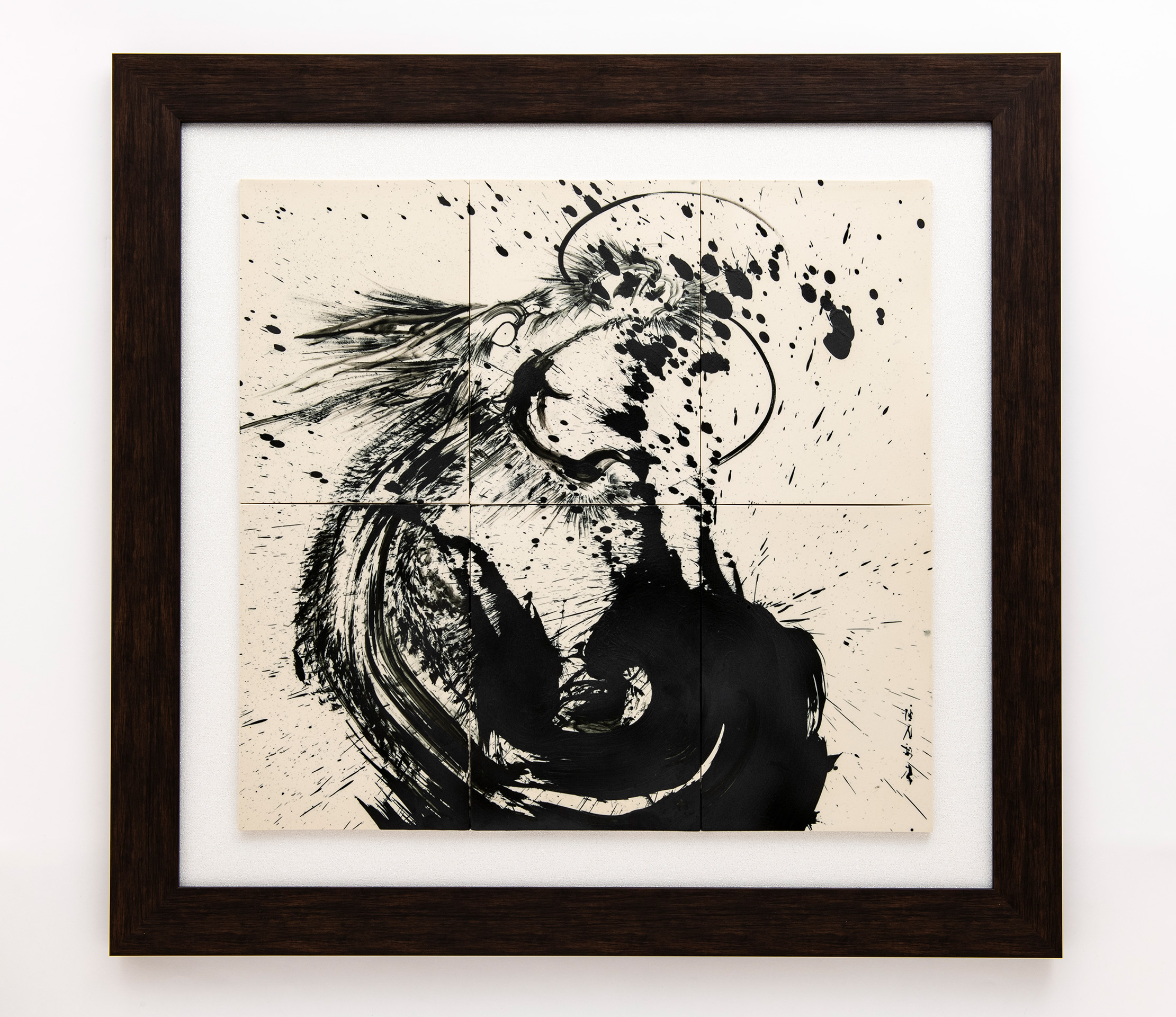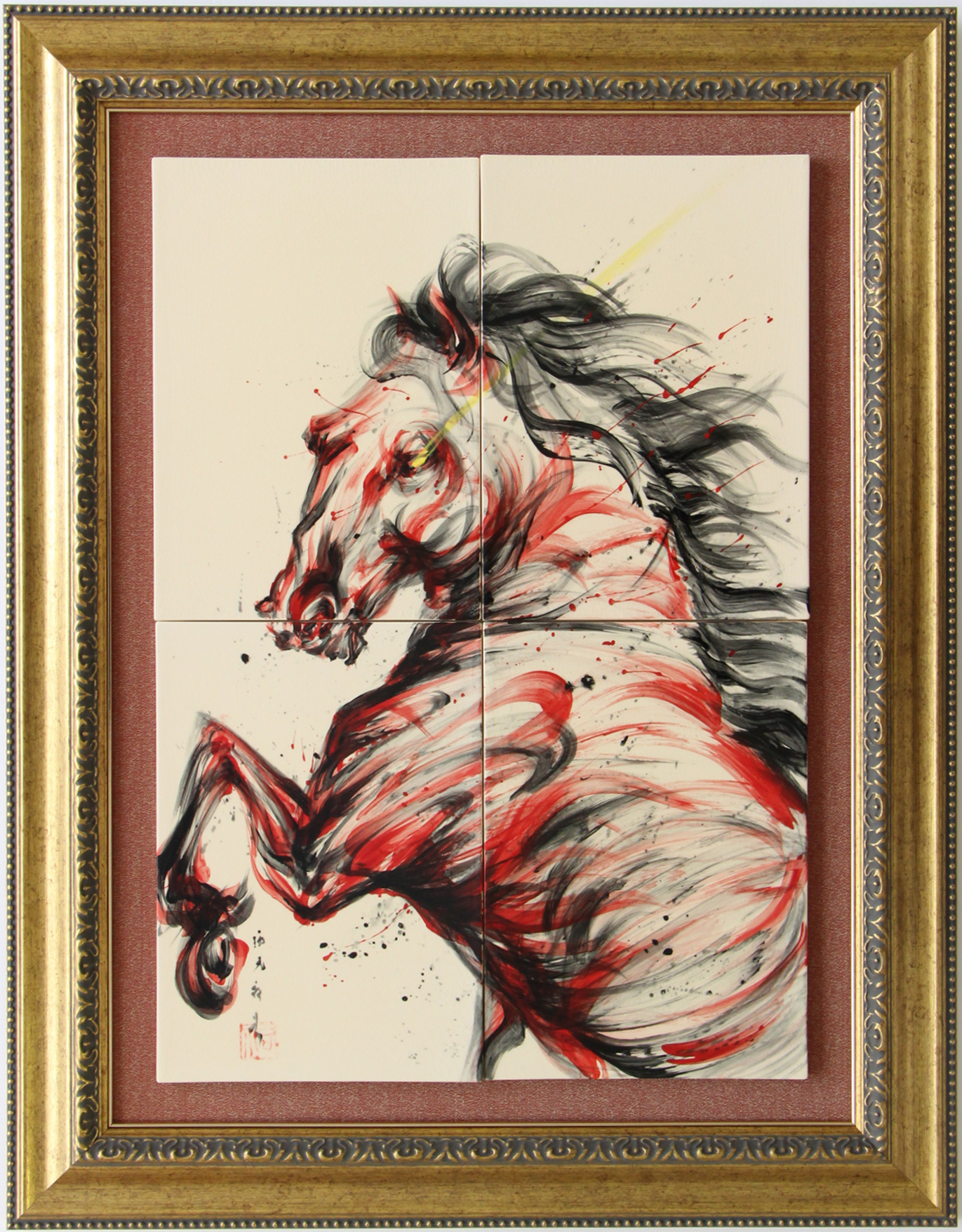Instant and eternal blow
"You're a spade and I'm an ofei, but we have the same soul. Let's blow together."
(Excerpt from "Stan Getz: A Life of Music" by Donald L. McGinn, translated by Haruki Murakami, Shinchosha)
The conversation between jazz trombonist Jack Teagarden and Louis Armstrong when they met is filled with the excitement of the encounter and the awe that would never change for the rest of his life. , that's exactly what black and white brow is like.
Nishimoto Yuki is one of the artists currently attracting attention from around the world, having been used as visual images for global sporting events. He has become known for his dynamic brushstrokes and his use of sports motifs, but he also creates classical motifs such as dragons and tigers, as well as landscapes, and since 2016 has expanded the realm of expression in ink painting by tōbokuga, a fusion of ink painting and ceramic art, which involves painting on ceramic panels.
Sumi-e paintings that evoke the feeling of living
A sense of dynamism runs through his work. Its source is in the sports he devoted himself to from an early age, just as he devoted himself to drawing. He saw the "real feeling of being alive" in the beauty of bulging muscles and bodily movements, as well as in the blurry images of photographs capturing the moment of a competition.
"I don't like making corrections (after finishing a painting), so I pursued expression in one shot, trying everything from oil painting, watercolor, drawing and acrylic before arriving at ink. From the moment I put my stroke down, there's no going back, and the tension of not allowing for failure" is what drives Nishimoto to create his works.
His style is to thoroughly observe his subject, make multiple sketches, and then take on the challenge of a one-shot challenge. He deliberately disrupts the balance of the composition and leaves out shadows that should be there, stimulating the viewer's imagination.
In contrast to Western paintings, which place emphasis on reproduction, ink paintings are not just about copying shapes, but also about artists reading the essence of the subject and painting subjectively. The light and dark shades, bleeding, blurring, and gradations of the ink applied to the white paper give each viewer a different sense of color, as Nishimoto says, "hundreds of colors lurk in the black and white." This is probably why some people who have seen Nishimoto's works have commented that they appear red, even though they are monochrome.
In ink painting, the Six Laws of Painting have been said since ancient times in China as important teachings for painting and appreciating pictures. Among these painting standards, "Qiyun Shengdong" preaches the expression of the lively energy of the subject. Unlike China, which does not stray from reality, Japan aimed for a freer expression and preferred to capture light and atmosphere and depict dynamic life. This is also related to the critic Kenneth Clark's statement that landscape paintings should not be mere records, but should be expressions of the artist's emotions when faced with a particular view, and should be painted as something full of humanity.
Ink painting represents permanence
Even if you decide on a theme for a live painting and prepare by making detailed sketches, it will end up being completely different on site. It is not uncommon for you to sense the atmosphere on site and change the subject on the spot. "Ink and paper are sacred to me, and I don't pick up a brush unless I'm prepared for it. That tension is the lifeline of my work, and ultimately my career as an artist," he says.
In 2015, he was invited by a potter of Echizen ware, one of the six ancient kilns in Japan, to begin working on ink painting. He paints on unglazed ceramic panels, layering colors with a special glaze, and finally fires them at 1200 degrees, so the work remains semi-permanently. This is an attempt to express permanence in contrast to ink painting and live painting, which are expressions of immediacy. From the way the brush glides to the way the colors come out, a completely different world emerges from that of Japanese paper, and he has established new possibilities for ink painting as well as a style that has pursued the full potential of ink painting.
"At first, the concept was to paint on the ceramic panels with a sumi-e touch, but depending on the mixture of glazes, the color of the soil, the temperature of the fire, and the season, it was impossible to predict how the finished product would turn out. I discovered the fascinating aspects of these colors. I struggled with many failures, such as the ceramic panels cracking, but after six years of work, I was finally able to produce the colors I was aiming for, and I feel that my own expression is expanding."
This prompted Nishimoto to base his creative activities in Fukui, where he has been discovering new forms of expression through encounters with Echizen ware and washi paper artisans. Just as pottery is an exchange between earth, water, fire, and wind, this can be seen as a dialogue with inherited techniques and the updating of others.
A declaration to break out of one's shell
"To be honest, I didn't like talking to people before. But through my work and activities, I've met people and I feel like my horizons have been opened up. Even a single word that comes out in a conversation can inspire a work of art, as it gives birth to the shock of encountering something that I don't have. That's why I've come to think that everyday life is so important."
Nishimoto says that when he first started out, he kept others away and didn't even like art. He realized that this closed-off attitude was the result of his own weakness, and that his powerful, strong touch was also a declaration of his determination to accept and overcome his own weakness.
"Looking back at my past works, I feel I was weak. I was timid, and I tried to copy the subject exactly as it was. But creating art was about overcoming that complex, and I think sumi-e was the way for me to overcome my weakness."
Having begun to create works in the naturally rich area of Fukui, Nishimoto says he has become interested in expressions that are not limited to dynamism, but that he will continue to seek out stronger touches and expressions than ever before. The content of this exhibition is more conscious of dynamism than ever before, and Nishimoto's confidence that ink painting can evolve even further can be seen in it.
"The world is full of bad news, but that is exactly why I want to make our hearts hotter." Improvisation takes place on a stage of empathy and tension with others. It is a momentary and eternal blow. Like jazz wind instruments, Nishimoto uses brush and ink to fully express the state of mind and body. It will give the audience a thrill that will make them break out of their shells.
